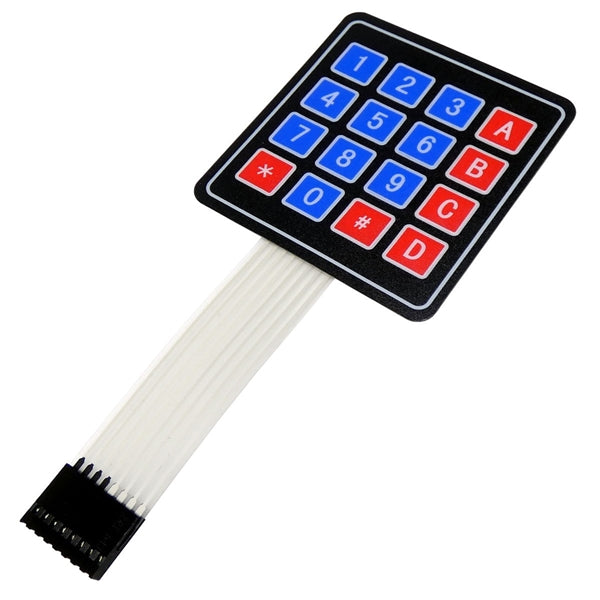Top Features to Look for in a High-Quality Membrane Switch
Top Features to Look for in a High-Quality Membrane Switch
Blog Article
Recognizing Membrane Switches Over: The Key to Sturdy and Trustworthy Controls

What Are Membrane Switches?
Membrane layer buttons are an innovative service in the world of customer interface technology, combining functionality and style flawlessly. These devices serve as an interface between individuals and digital systems, incorporating a number of parts into a compact format. Usually built from versatile, slim layers of materials, membrane buttons are created to reply to touch, making it possible for users to communicate with equipment and electronic gadgets properly.
The key components of a membrane layer button consist of a published circuit layer, graphic overlay, and a spacer layer that stops unplanned activation. The graphic overlay can be tailored to mirror brand name identity or individual preferences, boosting looks while making certain use. Membrane layer switches are typically used in different applications, consisting of medical devices, customer electronic devices, and commercial tools, owing to their resilience and resistance to environmental variables such as wetness and dust.
One of the key advantages of membrane layer buttons is their capability to hold up against damage, making them ideal for high-traffic settings. Furthermore, they are lightweight and call for very little space, enabling innovative layouts in item development. On the whole, membrane changes represent a sensible and effective choice for modern-day electronic user interfaces, marrying modern technology with user-centric style concepts.
Exactly How Membrane Switches Over Work
The operation of membrane layer changes hinges on an easy yet efficient mechanism that equates customer input into electronic signals. When a customer presses the switch, the leading layer deforms, enabling a conductive component in the circuit layer to make call with an equivalent conductive pad on the underside of the visuals overlay.
The layout of membrane layer buttons can vary, but they frequently include domes or responsive elements to offer comments to the individual, boosting the overall experience - membrane switch. The materials utilized in membrane layer buttons, such as polyester or polycarbonate, add to their durability and resistance to environmental aspects, consisting of moisture and dirt. The printed circuits are typically encapsulated, which protects them from wear and tear over time.
Advantages of Membrane Buttons

Furthermore, membrane layer buttons are recognized for their toughness. Created from durable products, they are immune to dirt, dampness, and physical wear, which substantially prolongs their life-span compared to conventional mechanical switches. This sturdiness makes them especially appropriate for high-traffic settings and applications calling for long life.
An additional substantial advantage is the convenience of cleansing and upkeep. The smooth surface area of membrane layer changes lessens dust build-up and is often unsusceptible spills, making them optimal for setups that call for regular sanitization.
Additionally, membrane layer switches supply a structured account, causing a thinner style that can be integrated right into various tools without including bulk. This feature not just boosts the aesthetic charm however also adds to an extra ergonomic product design.
Applications of Membrane Layer Switches
Flexible and straightforward, membrane layer buttons find applications throughout a vast range of industries, including medical tools, customer electronics, and industrial tools. In the medical area, these switches are essential to tools such as analysis tools, person tracking systems, and infusion pumps, where integrity and ease of cleansing are crucial. Their ability to preserve and withstand harsh settings performance makes them ideal for such applications.

In consumer electronic devices, membrane layer switches are made use of in products like microwaves, washing equipments, and remote controls - membrane switch. Their smooth layout permits instinctive interface, enhancing the general customer experience while offering durability and resistance to damage
Commercial equipment likewise takes advantage of membrane layer buttons, particularly in control panels for machinery and automation systems. These switches supply protection against dust and wetness, making certain consistent performance in tough environments. Additionally, their adjustable attributes permit manufacturers to tailor them to certain functional needs, enhancing efficiency and functionality.
Choosing the Right Membrane Change
When choosing a membrane switch, it is important to think about different variables that affect efficiency and suitability for certain applications. The key considerations consist of environmental conditions, tactile comments, sturdiness, and style specifications.
First, assess the operating atmosphere; buttons revealed to dampness, chemicals, or extreme temperature levels need details products to make sure durability and functionality. Next off, review the requirement for responsive responses. Depending upon user communication, some applications might take advantage of a responsive action to verify activation, while others might choose a non-tactile design look these up for visual reasons.
Sturdiness is another crucial element; membrane layer switches should be created to endure frequent usage, impacts, and abrasion. Ensure the chosen switch can sustain the expected lifecycle, specifically in high-usage scenarios.

Verdict
In final thought, membrane switches over work as essential parts in the style of durable and reliable control systems across numerous markets. Their compact layout, integrated with durable building and customizable attributes, enhances customer interaction while guaranteeing long life in demanding settings. The adaptability of membrane layer changes permits for tailored solutions that fulfill particular functional needs, strengthening their significance in contemporary innovation. As industries remain Continued to evolve, the value of integrating efficient membrane switch options can not be overemphasized.
Membrane layer switches over stand for a vital element of modern-day user interface layout, blending functionality with durability in different applications.Membrane layer buttons are an advanced option in the realm of individual interface modern technology, incorporating functionality and design seamlessly. Usually built from versatile, slim layers of products, membrane layer buttons are made to react to touch, making it possible for customers to engage with equipment and electronic gadgets successfully.
The style of membrane layer switches can vary, but they frequently incorporate domes or responsive components to supply comments to the individual, enhancing the overall experience.In conclusion, membrane layer changes offer as necessary elements in the design of dependable and Discover More durable control systems throughout numerous industries.
Report this page